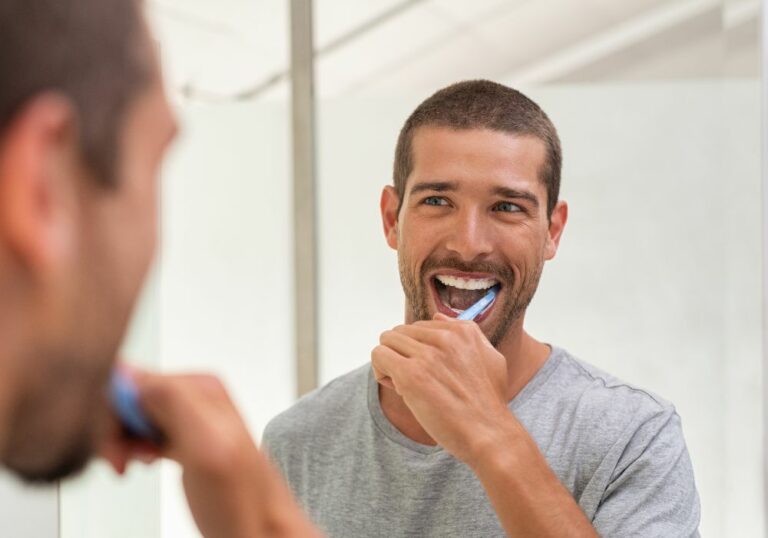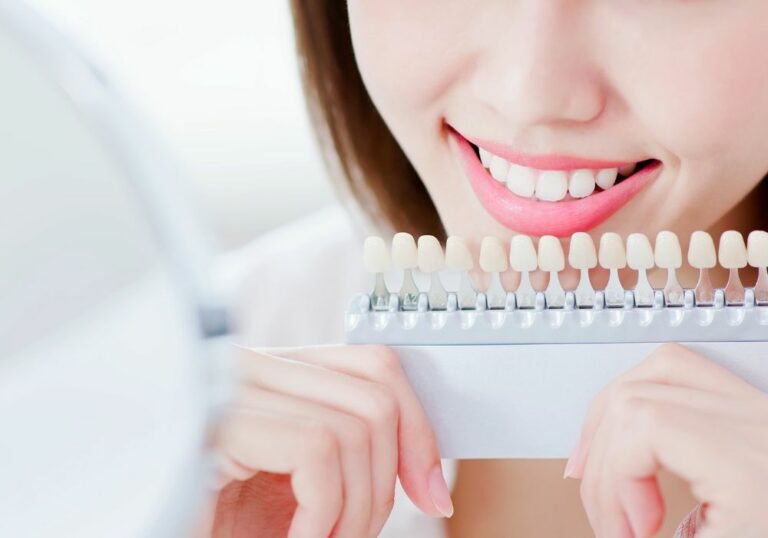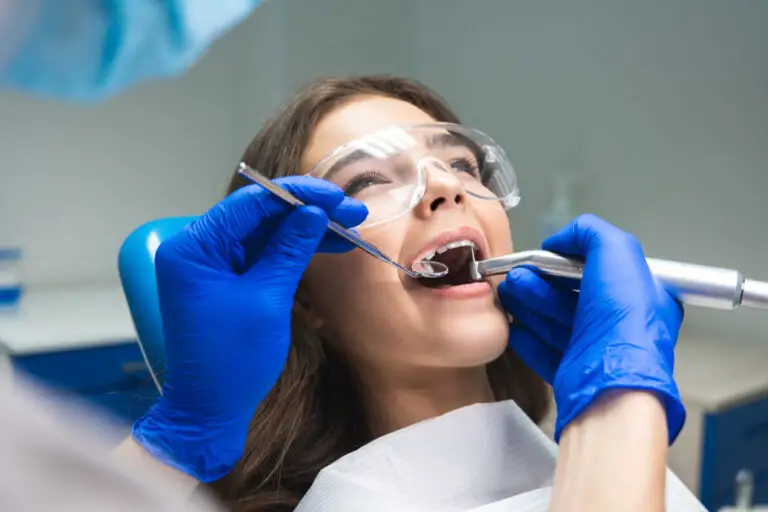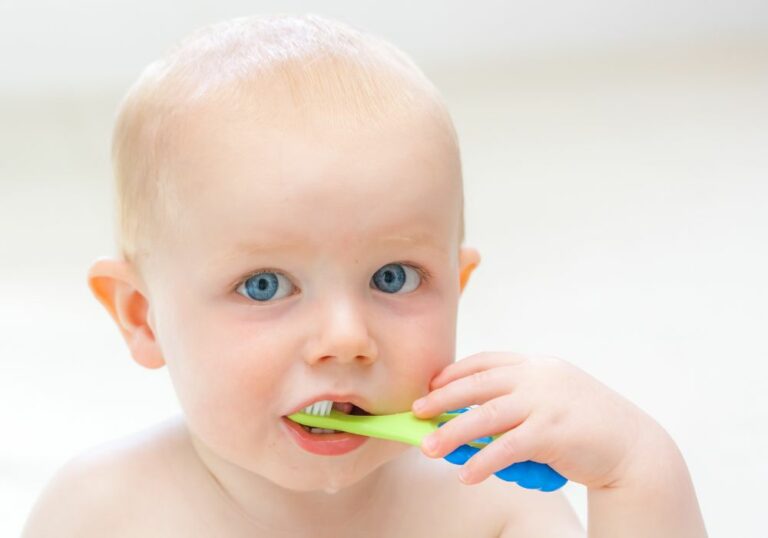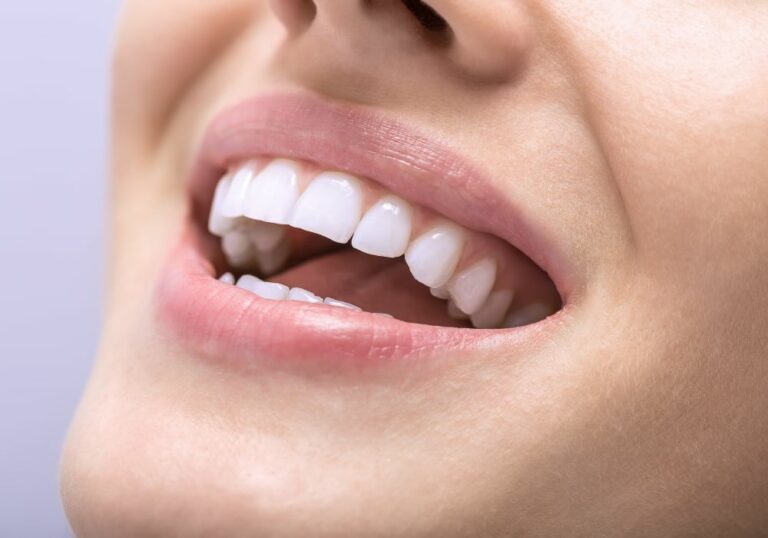Oral health is now recognized as being closely linked to overall health and wellbeing. Taking proper care of your teeth and gums benefits your whole body, not just your smile. Poor oral hygiene allows dental plaque to build up, leading to tooth decay, gum infections, bone loss, and eventual tooth loss. Bacteria from gum infections can even enter the bloodstream and negatively impact major organ systems. That’s why it’s so important to maintain good oral hygiene habits. One key practice is brushing properly at night before bed and again in the morning after waking up.
Brushing thoroughly removes plaque that constantly forms and if left, causes cavities, gingivitis, periodontitis and bad breath. Nighttime brushing is critical since saliva flow diminishes as you sleep, allowing bacteria to multiply unchecked. Morning brushing helps start the day with the cleanest mouth possible and mitigates the effects of nighttime bacterial growth. Establishing consistent brushing habits morning and night significantly improves your oral and total health.
The Importance of Oral Hygiene
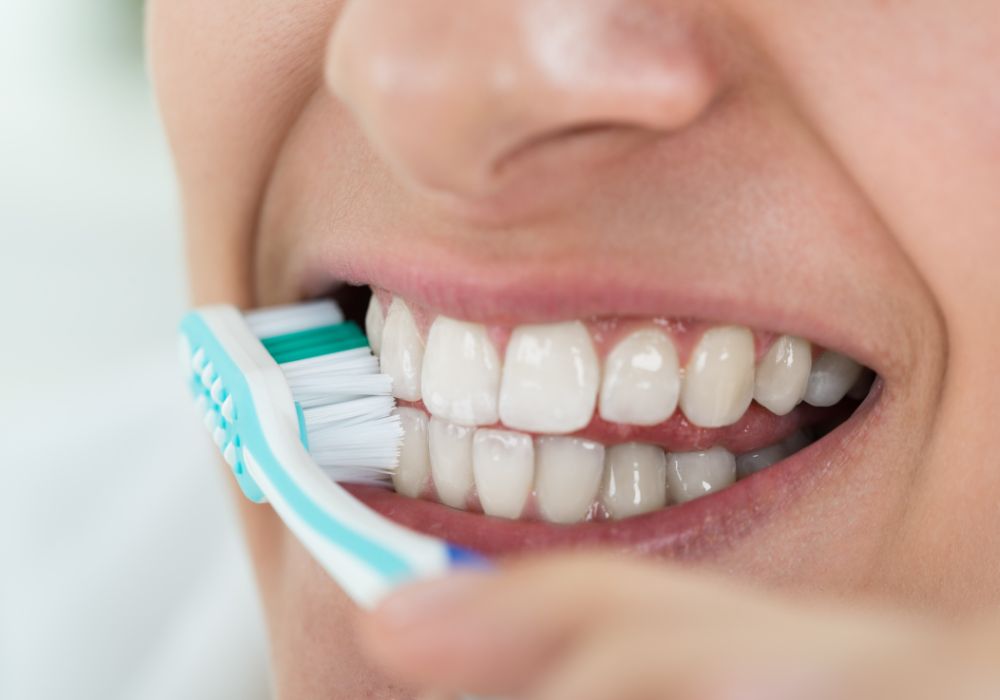
Maintaining good oral hygiene is essential for overall health and wellbeing. Proper brushing and flossing prevents tooth decay, gum disease, bad breath, and other dental problems (American Dental Association, 2022). According to the Centers for Disease Control and Prevention (CDC), almost half of all adults aged 30 years or older show signs of gum disease, which can lead to tooth loss if left untreated (CDC, 2021). Practicing good oral care habits such as brushing twice a day and flossing daily can help promote healthy teeth and gums.
Brush Before Bed
It is especially important to brush your teeth before going to bed at night. When you sleep, saliva production decreases, allowing plaque bacteria to grow and spread in the mouth (Pontefract, 2017). Brushing before bed removes plaque that accumulated during the day and prevents harmful acids from attacking tooth enamel while you sleep. Here are some key reasons to brush before bed:
Removes Plaque Buildup
Plaque is a sticky film containing bacteria that forms on teeth. If not removed by brushing and flossing, plaque turns into tartar that sticks to teeth and causes cavities and gum disease. Brushing at bedtime dislodges food debris and plaque from the teeth, helping keep your mouth clean overnight.
Prevents Acid Attack on Tooth Enamel
Plaque bacteria feed on food particles and produce acids that erode tooth enamel. Saliva helps neutralize these acids and repair early enamel damage during the day. But at night, saliva flow decreases. Brushing removes plaque so acid attacks are minimized as you sleep.
Freshens Breath Overnight
Brushing your teeth before bed helps freshen your breath for hours while you sleep. It removes odour-causing bacteria, food debris, and plaque that cause bad breath. Waking up with fresh breath is a great way to start your morning.
Brush After Waking Up
It’s equally important to brush your teeth first thing when you wake up in the morning. Your mouth is essentially a bacteria incubator while you sleep. Saliva flow decreases, plaque bacteria multiply, and acids form. Brushing immediately after waking counteracts these effects.
Stimulates Saliva Flow
Brushing first thing in the morning stimulates saliva production. Saliva contains minerals that help strengthen and remineralize tooth enamel after the overnight acid attack from plaque bacteria. Saliva also washes away bacteria and food remnants.
Removes Morning Breath
Brushing removes odour-causing bacteria that multiplied overnight, eliminating morning breath. It’s much more pleasant to start your day with minty-fresh breath.
Prevents Plaque Buildup
Morning brushing removes bacteria and plaque before you eat breakfast. This prevents plaque accumulation and lowers your risk of cavities and other oral health problems.
Sets a Healthy Routine
Beginning your morning by brushing sets a healthy daily habit. You’re more likely to stay on track and maintain good oral hygiene if you brush first thing after waking up.
Proper Brushing Technique
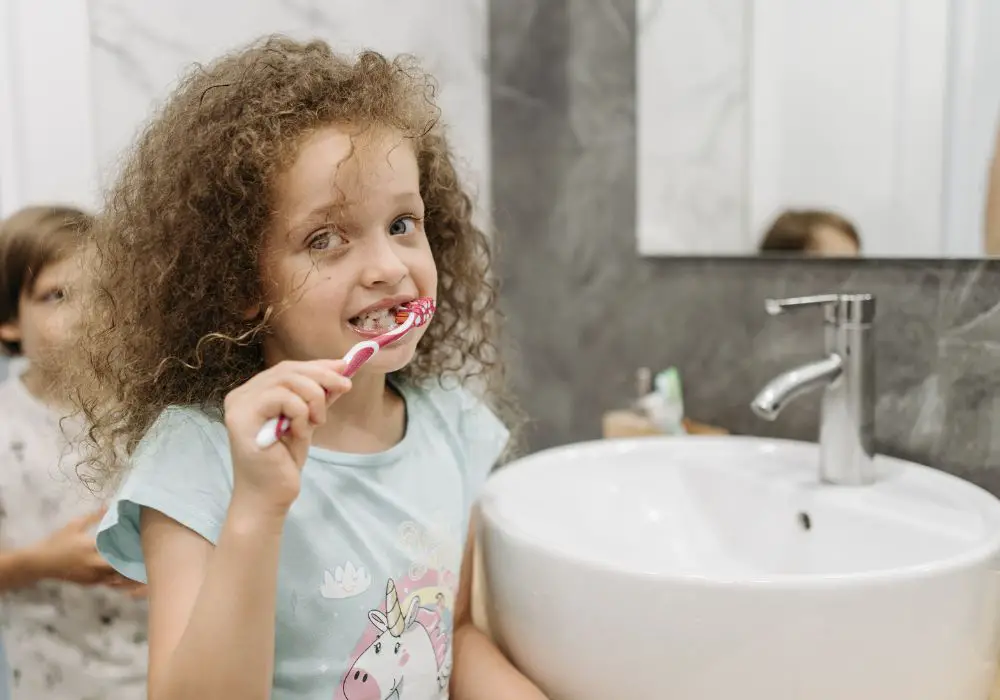
To get the most benefit, use proper brushing technique when you brush your teeth. Here are some evidence-based tips:
- Use a soft-bristled toothbrush. Hard bristles can damage tooth enamel. The ADA recommends looking for a toothbrush with soft, rounded nylon bristles. Replace your toothbrush every 3-4 months or sooner if the bristles look frayed (ADA, 2022).
- Brush for 2 minutes. Set a timer or play a 2-minute song while brushing to ensure you brush for the full recommended time.
- Apply pressure gently. Brushing hard can erode enamel. Use light pressure and short strokes.
- Brush all surfaces. Clean the outer, inner, and chewing surfaces of all teeth.
- Brush your tongue. Bacteria and debris also collect on your tongue, contributing to bad breath. Gently brush your tongue using back-to-front strokes.
- Brush properly. Use short back-and-forth strokes and a 45-degree angle where the teeth and gums meet. Take care to brush along the gumline and hard-to-reach back teeth.
- Focus on problem areas. Pay extra attention to teeth and areas that are prone to more plaque buildup.
Choosing the Right Toothbrush and Toothpaste
Using an effective toothbrush and fluoride toothpaste boosts your oral care routine. Here are some tips for choosing products:
Toothbrush Type
- Manual vs. electric: Both are effective. Electric brushes may remove more plaque but require charging. Manual are cheaper and work well with proper technique.
- Bristle texture: Soft or extra-soft bristles are best. Medium bristles are okay if you don’t brush too hard.
- Size and shape: Choose a brush with a small head that allows you to reach all areas. Handle size comes down to personal preference.
- Features: Look for American Dental Association (ADA) approval. Bristles fading color indicates it’s time to replace.
Toothpaste Considerations
- Fluoride: Fluoride makes enamel more resistant to decay. Look for the ADA Seal of Acceptance.
- Whitening: Many whitening toothpastes contain gentle abrasives to remove surface stains, but can’t change tooth color.
- Ingredients: Most contain mild abrasives for plaque removal, fluoride, and detergents that make the paste foam.
- Flavor: This comes down to personal preference. Try different flavors to find one you enjoy.
- Other features: Some offer tartar protection, desensitizing agents, or antimicrobial ingredients. Assess your needs.
Flossing for Complete Cleaning
While brushing cleans exposed tooth surfaces, flossing is key for cleaning in between teeth where plaque also collects. Floss once daily, especially at night, using these tips:
- Break off a piece of floss about 18 inches long. Wrap the ends around your middle fingers with about 1-2 inches in between.
- Use your index fingers and thumbs to slide the floss gently between two teeth. Avoid snapping floss down which can damage gums.
- Curve the floss into a C-shape around the base of the tooth and gently slide it up and down. Repeat on the adjacent tooth.
- Floss all side and back teeth, unrolling fresh floss as you go. Use clean sections between each tooth.
- Take extra care to floss behind back molars that brushing can miss. Use dental picks if needed.
Flossing removes plaque and food particles from places your toothbrush can’t reach. It takes just a few minutes to floss thoroughly and is critical for gum health and preventing cavities between teeth. Like brushing, floss gently to avoid damaging delicate gum tissue.
Other Oral Health Care Tips
Here are some other tips for keeping your mouth clean and healthy:
- Visit the dentist regularly for professional cleanings and oral exams. Get treated promptly for any oral health problems.
- Consider a fluoride mouthwash for extra protection if you are prone to cavities. Pick a product with the ADA Seal.
- Don’t smoke or use other tobacco products, which increase oral cancer and gum disease risks.
- Eat a balanced diet low in sugary or starchy foods that feed plaque bacteria. Stay hydrated with water.
- Limit snacking between meals and brush after eating something sticky or sugary.
- Replace your toothbrush after illness to avoid reinfection.
Special Considerations
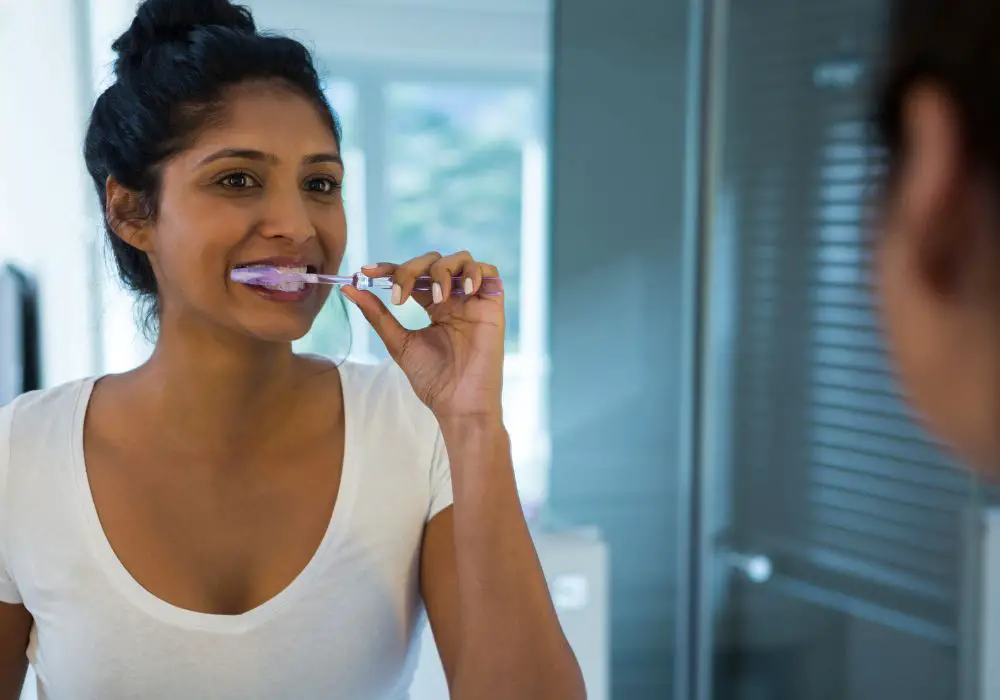
Some people may need to take extra precautions with oral hygiene:
- Braces or dental work: Brush carefully around braces wires and clean thoroughly between teeth with braces floss. Adjust technique as needed.
- Periodontal disease: Take any prescribed medicated rinses. Be extra thorough brushing and flossing diseased areas.
- Dry mouth: Ask about prescription rinses, gels, or sprays if dry mouth caused by meds or disease is an issue.
- Manual dexterity issues: Try adaptive brushes, electric brushes, floss holders, or interdental picks.
- Children: Help monitor and teach good technique. Use ADA-approved fluoride toothpaste in the right amount.
Frequently Asked Questions
How long should I brush my teeth for?
You should brush your teeth for 2 minutes, twice per day (morning and night) to effectively remove plaque and debris. Set a timer or play a song while brushing to ensure you meet the 2-minute brushing recommendation.
What is the best technique for brushing?
Use short, gentle back-and-forth strokes, holding your brush at a 45-degree angle where your teeth and gums meet. Take care to brush all surfaces thoroughly – outer, inner, chewing surfaces, and the tongue. Avoid brushing too hard.
Why is it important to brush your tongue?
Your tongue harbors bacteria that cause bad breath. Brushing your tongue removes this odor-causing bacteria to help freshen your breath. Use soft, gentle strokes towards the back of your tongue.
Do I really need to floss as well as brush?
Yes. While brushing cleans exposed tooth surfaces, only flossing can remove plaque and food debris trapped between teeth and just below the gumline where cavities often start. Floss once a day, especially at night.
Is an electric toothbrush better than a manual toothbrush?
Electric toothbrushes are not necessarily better, but they may remove more plaque. However, a manual brush also works effectively if you use proper technique. Choose whichever type you find easiest to use consistently. The key is brushing thoroughly twice a day.
Conclusion
Developing consistent oral hygiene habits such as brushing your teeth morning and night and flossing regularly is critical for protecting your dental and overall health. Proper brushing and flossing technique matter, as does choosing products suited to your needs. Taking good care of your teeth now prevents extensive, costly dental treatments later on. Keeping your mouth clean and healthy takes just a few minutes each day but pays off in the long run with a bright, beautiful smile.

